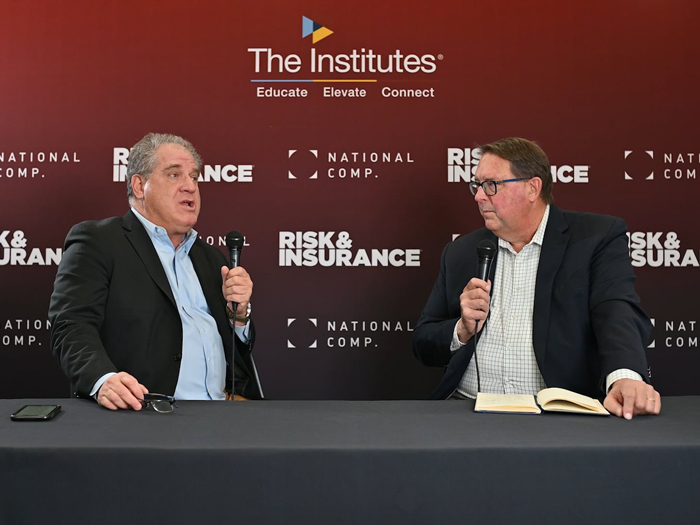The Law
Legal Spotlight

Insurer Must Pay Portion of $2.4 Million in Damages
After construction of a 53-unit N.J. condominium building was completed in 2004, unit owners began complaining of leaky roofs and windows.
Cypress Point Condominium Association filed suit against Aria Towers LLC, Metro Homes LLC and Commerce Construction Management LLC (collectively, the “developer”) and various subcontractors hired by the developer including MDNA Framing Inc., which framed the building and installed the windows. The cost to replace and repair the façade was $2.4 million.
The developer sought a defense and indemnification from Evanston Insurance Co., which had issued four commercial general liability policies from 2002 to 2006. The insurer refused. The condo association then sought a determination from the court as to whether its claims against the developer were covered by Evanston’s CGL policies.
Evanston subsequently filed a complaint against Crum & Forster Specialty Co., which had issued CGL policies from 2006 to 2010 to the developer, and a commercial excess liability policy from 2008 to 2009. The suit asked that Crum & Forster share in any responsibility.
A N.J. trial court dismissed the condo’s complaint, agreeing with the insurers that faulty workmanship did not constitute property damage or an occurrence, as defined by the policies. The court ruled the developer owed the condo association $789,931 (33 percent of the total damages), and MDNA owed it $957,493 (40 percent of the total damages).
A state appeals court subsequently ruled the damages did constitute property damage. The state Supreme Court affirmed. The case was returned to the trial court to determine whether any exclusions in the policies would apply.
On Dec. 5, the court found that Evanston’s exclusions in its 2004 policy do not cover “consequential damages flowing from faulty window installation” or mold removal. At the same time, it dismissed Crum & Foster from the case because the damage predated the policies.
The policies, however, only covered “common areas” of the condo, so further hearings will determine what costs are covered. The court dismissed the condo’s individual owners from the case, permitting them to file separately for damages.
Scorecard: Further legal proceedings will determine how much of the $2.4 million in damage, minus a $50,000 self-insured retention, should be paid by Evanston.
Takeaway: The insurance company must pay “reasonable costs that are directly related to the cost of repairing consequential damages” to the condo’s common areas.
Rape Damages Not Covered
In 2011, an 18-year-old woman was served alcohol laced with rohypnol while discussing “career opportunities in the food service industry” with Ajredin “Danny” Deari, owner of Pastazios Pizza, and another man.
The woman regained consciousness in a nearby hotel room as Deari allegedly sexually assaulted her. He subsequently confessed to aggravated assault.
In 2013, the woman sued the pizzeria, Deari and the other man for bodily injury, sexual assault and negligence. Century Surety Co., which had issued a commercial general liability policy to the pizzeria, subsequently sought a court order that it had no duty to defend or indemnify the pizzeria or Deari.
After a trial, the woman was awarded $21.5 million in damages from Deari and the pizzeria, which earlier declared bankruptcy. The U.S. District Court in Dallas ruled on Jan. 4 that Century had no responsibility for the bodily injury coverage because the policy required the “occurrence” to be “an accident.”
As for the negligence claim, the court ruled the exclusion for occurrences where the “proximate or contributing cause” arose from “liquor liability” applied to the case. It rejected the argument from the bankruptcy trustee for the pizzeria that the exclusion did not apply because neither alcohol nor rohypnol were licensed to be sold by the pizzeria, and thus could not be considered “products” under the policy.
Scorecard: The insurance company does not have to indemnify the pizzeria or its owner for the $21.5 million judgment.
Takeaway: Because the conduct was intentional, coverage for an “occurrence,” which was defined as an “accident,” is excluded.
Staffing Company Nurse Ruled an Employee
In 2010, an induced birth resulted in neonatal asphyxia, resulting in permanent brain damage. Two years later, the parents of the injured child sued Laurel Regional Hospital in Maryland and several of its doctors and nurses. The case against one of the nurses, Marie Cryer, who had been placed at the hospital by Favorite Healthcare Staffing, ultimately settled for $2.5 million.
That amount plus the defense, costing about $500,000, were paid for by Interstate Fire and Casualty Co., which issued a professional liability policy to Favorite Healthcare Staffing. Interstate sought reimbursement from Dimensions Assurance Ltd., a captive owned by the hospital.
Dimensions, which provided general and professional liability coverage, rejected the claim, stating that Cryer was not an employee.
A district court in Maryland upheld that argument, and Interstate appealed. The U.S. 4th Circuit Court of Appeals reversed the decision on Dec. 6, ruling that the hospital’s control over Cryer made her “an employee of the hospital as a matter of law.”
The court also noted that while the general liability portion of the Dimensions policy specifically excluded “agency-provided practitioners,” the professional liability section did not.
Scorecard: The hospital’s captive insurance company may be responsible for the $3 million malpractice case costs.
Takeaway: The court ruled the definitions in the insurance policy superseded the staffing company agreement.












